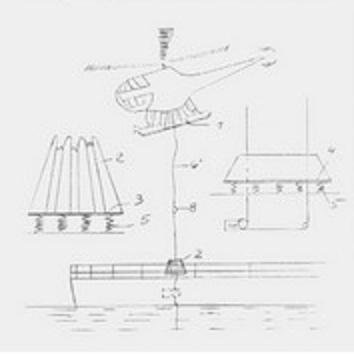- Joined
- 11 March 2006
- Messages
- 8,625
- Reaction score
- 3,806
In „Der Flieger“, April 1961 the German patent 92b 1086583 is shown, filed by J. Böckelmann, La Spezia/Italy. It deals with a
device to ease landing of a helicopter on a ships platform, especially during rough seas. A cone is lowered on a cable down to
a kind of a cage set into the landing platform, then the heli is pulled down by a winch.
Isn’t that the Beartrap sytem deployed by the Candian Navy ?
device to ease landing of a helicopter on a ships platform, especially during rough seas. A cone is lowered on a cable down to
a kind of a cage set into the landing platform, then the heli is pulled down by a winch.
Isn’t that the Beartrap sytem deployed by the Candian Navy ?

